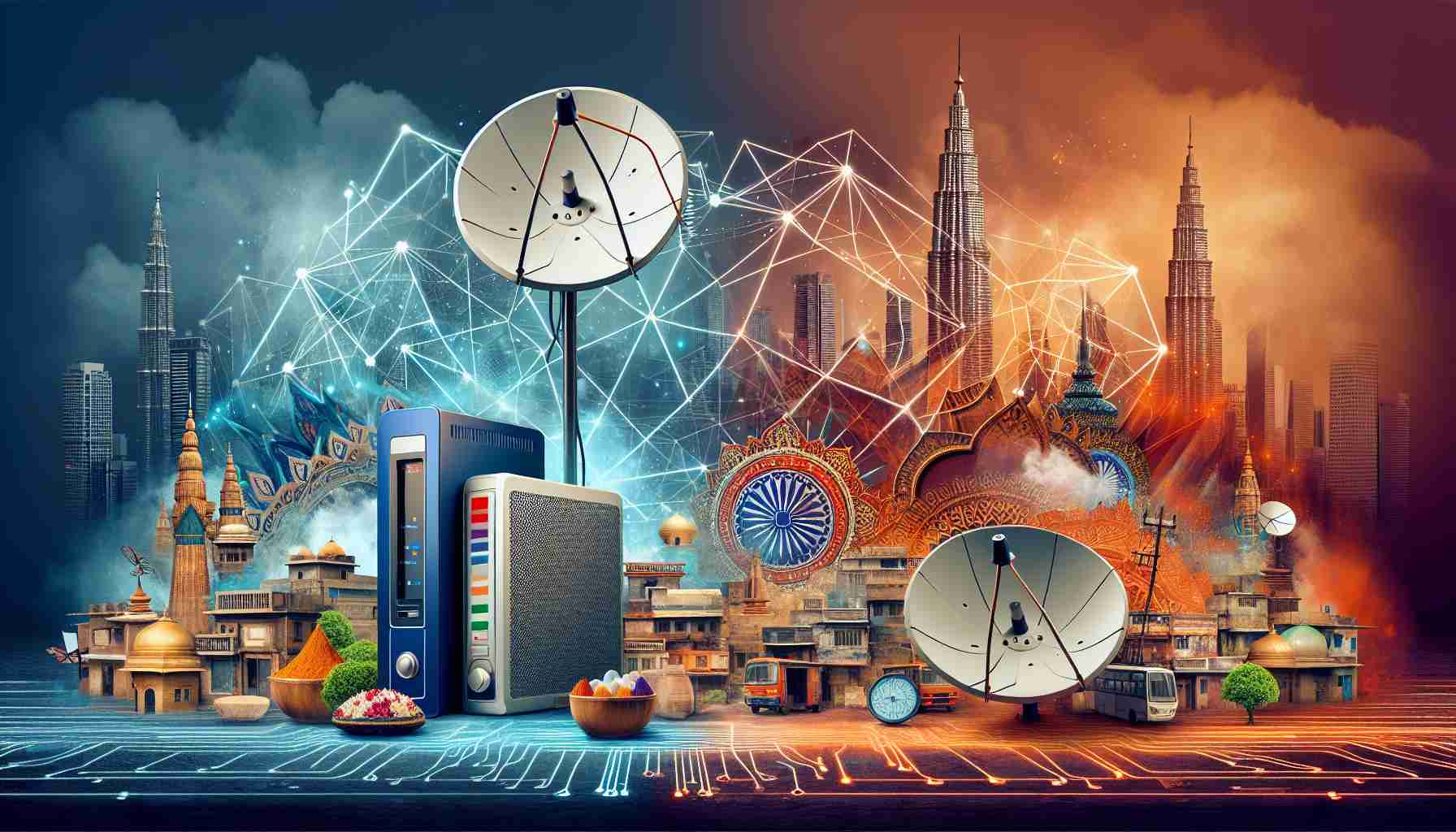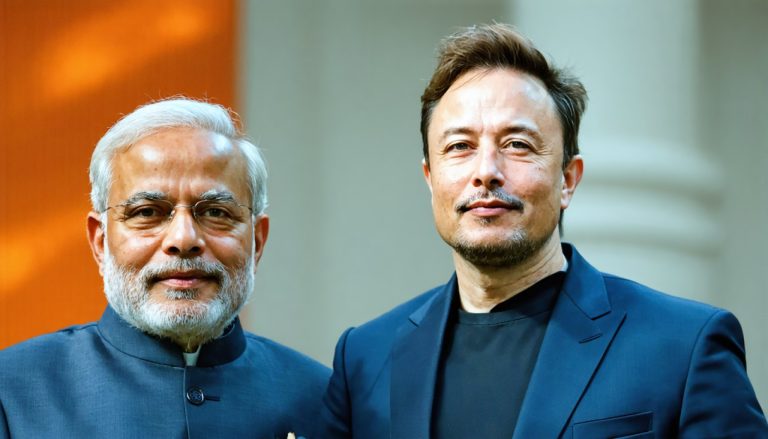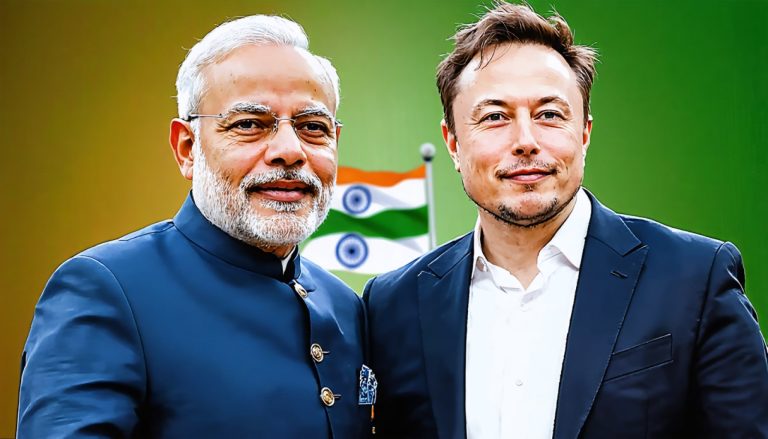
The competition between major players in the Indian satellite internet sector is heating up, as two industry titans aim to revolutionize online access across the nation. Elon Musk’s Starlink is preparing to introduce its low-Earth orbit satellite services in India, while Mukesh Ambani’s Reliance Jio has forged a partnership with SES, a Luxembourg-based company, to utilize medium-Earth orbit technology.
This development follows the Indian government’s decision to manage the allocation of satellite spectrum, which has notable implications for broadband access. With the potential to reach remote and underserved regions, satellite broadband is seen as a vital tool in narrowing the digital divide in India. The contrasting perspectives of Musk and Ambani on spectrum allocation hint at the forthcoming contest, with Ambani advocating for traditional auction methods and Musk favoring a more streamlined administrative approach.
The Indian telecommunications market is expansive, with approximately 40% of its population currently lacking reliable internet access. As both companies seek to tap into this potential customer base, pricing strategies will play a pivotal role in shaping the competitive landscape. Experts anticipate a possible price war, as the cost of mobile data remains remarkably low in India. Musk’s financial resources may give Starlink a unique advantage, though the road ahead is fraught with challenges, primarily due to Starlink’s higher pricing compared to established local services.
Satellite Internet Rivalry in India: A New Era of Connectivity
The race to provide satellite internet services in India is gaining momentum as established tech giants battle for dominance in a burgeoning market. The rivalry between SpaceX’s Starlink and Reliance Jio, in partnership with SES, is not just about technology; it’s about transforming connectivity in a market where significant segments of the population remain offline.
What are the key players in this satellite internet rivalry?
Besides Starlink and Reliance Jio, there are other notable companies entering the fray, such as OneWeb and Bharti Airtel, which have partnered in the past for satellite communications. This competition promises to drive innovation and better service offerings as each company looks to establish a foothold in this growing market.
What are the primary challenges facing satellite internet providers in India?
1. Regulatory Hurdles: The Indian government’s stringent policies regarding spectrum allocation and licensing could impact the scale and speed at which services can be launched.
2. Infrastructure Limitations: India’s vast geography, especially in rural areas, poses logistical challenges for deploying satellite ground stations and customer terminals.
3. Affordability: Given the financial constraints of many consumers in India, companies must navigate the balance between offering advanced technology and ensuring services remain affordable to entice users.
Are there any controversies surrounding the satellite internet sector?
Yes, there are ongoing debates about the fairness of spectrum allocation. Musk’s push for a streamlined administrative process contrasts sharply with Ambani’s traditional auction model, raising questions about equitable access to resources and operational transparency. Furthermore, there are concerns about potential monopolistic practices, given Ambani’s expansive market influence and resources.
What are the advantages and disadvantages of satellite internet in India?
Advantages:
– Wider Reach: Satellite internet can provide connectivity in remote and challenging terrains where traditional broadband services fail to reach.
– Rapid Deployment: Satellites can be deployed more quickly compared to laying extensive fiber networks, especially in difficult geographical areas.
– Flexibility: It can enhance connectivity for mobile users, making it a suitable option for rural areas.
Disadvantages:
– Higher Costs: Compared to terrestrial options, initial setup and ongoing service costs may be higher, posing a barrier to widespread adoption.
– Latency Issues: Satellite internet can experience higher latency than fiber-optic connections, which affects applications like online gaming and real-time communications.
– Weather Sensitivity: Heavy rain and adverse weather conditions can disrupt satellite signals, impacting service reliability.
What does the future hold for satellite internet in India?
As technology advances, particularly in satellite constellation and ground communication, the landscape is likely to evolve rapidly. Consumer adoption will depend on successful pilot programs, effective marketing strategies, and adherence to regulatory frameworks. Industry analysts predict that improvements in satellite technologies will enhance speed and reduce latencies, potentially making satellite internet a mainstream option in India.
Conclusion
The satellite internet rivalry in India marks the beginning of a transformative phase for connectivity in the region. With the right strategies and technological advancements, both Starlink and Reliance Jio have the potential to drive digital inclusion and bridge the digital divide.
For further insights on the topic, refer to NFC World and Forbes.



